Introduction
Product Overview
{{section_header}}{{section.name}}{{/section_header}}
Meet the Sony XBA-3s.
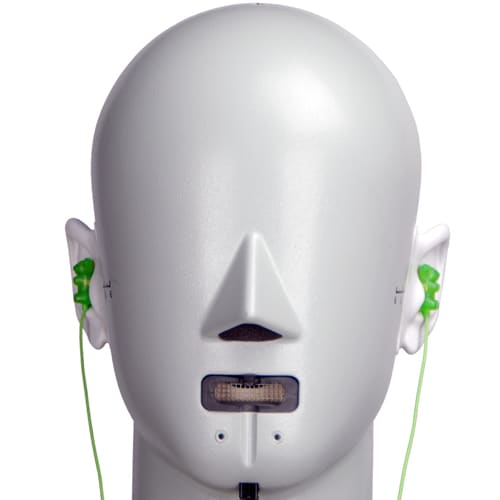
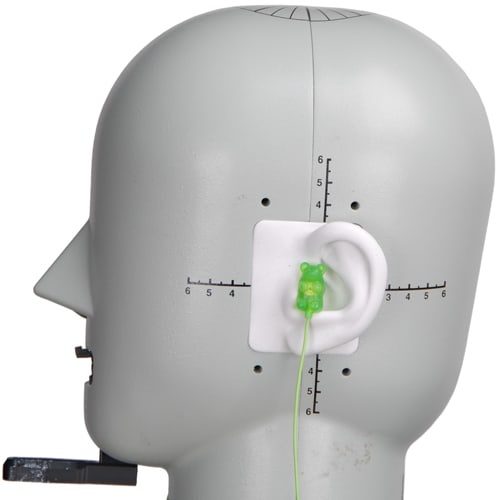
Speakers
{{section_header}}{{section.name}}{{/section_header}}
Here we see the nozzle of the {{product.name}}s, guarded by a small cylinder of foam.
Sides
{{section_header}}{{section.name}}{{/section_header}}
Because each earbud has three drivers (woofer, tweeter, all-range), the {{product.name}}s are understandably odd-shaped.
Cable
{{section_header}}{{section.name}}{{/section_header}}
The {{product.name}}'s 3.94 foot asymmetric-Y cable is ensconced in a flat rubber casing with a fixed cable split near the earbuds, and terminates in a standard 1/8th inch plug.
Because there are no included adapters, the {{product.name}}'s standard 1/8th inch jack is the only thing you'll be using to connect to your media devices.
The cableguards of the {{product.name}} are very tiny, but consist of a rubber coating that's a little thicker than the cable coating. Do not tug these out of your ears, lest you damage the internal solder points.
Additional Features
{{section_header}}{{section.name}}{{/section_header}}
There are several other sizes of sleeves, as well as a cable management system included in the packaging for the {{product.name}}s.
In the Box
{{section_header}}{{section.name}}{{/section_header}}
Included in the packaging for the {{product.name}}s are several different sleeve types, a set of "noise cancelling" sleeves, cable management system, carrying case, and assorted documentation.
Durability
{{section_header}}{{section.name}}{{/section_header}}
In-ear headphones are not that durable to begin with, and the {{product.name}}s don't do a lot to buck that trend. You can't recable in the event of breakage, and the light headphones do not have a robust cable to deter breaking. While this is true, if you use your carrying case and cable management system, and make sure to gently handle them when putting them on or taking them off, you should be fine.
Aesthetics
{{section_header}}{{section.name}}{{/section_header}}
These are not attractive-looking headphones, but it doesn't seem too much like they were meant to be. After all, most of the marketing material seems to be geared towards how they perform, and that's what matters, right? Don't expect these to be flashy headphones that draw attention to you.
Frequency Response
{{section_header}}{{section.name}}{{/section_header}}
Outside of an unusual dip in the 8-9kHz range, the {{product.name}}s have a fairly impressive frequency response, even maintaining the highs a lot better than many other headphones we've seen. The {{product.name}}s do emphasize bass a bit, but overall the response is fairly flat, albeit a bit angled towards the lower frequencies.

Click here for more information on our frequency response test.
Distortion
{{section_header}}{{section.name}}{{/section_header}}
Despite the somewhat low level of distortion on the graph, the total power sum of the distortion is quite high, meaning the accuracy of the sound is quite a bit lower than normal.
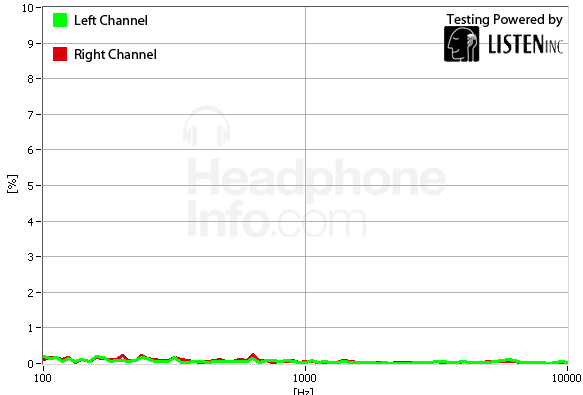
Click here for more information on our frequency response test.
Tracking
{{section_header}}{{section.name}}{{/section_header}}
While there are small blemishes on the tracking line of the {{product.name}}, these are largely academic and are not audible to the human ear. You shouldn't notice any shift in channel preference.
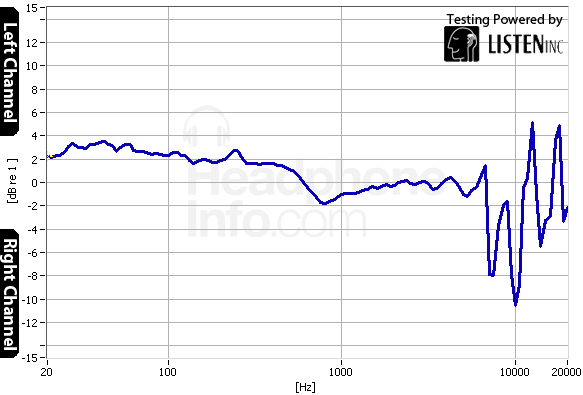
Click here for more information on our frequency response test.
Isolation
{{section_header}}{{section.name}}{{/section_header}}
While in-ear headphones are typically very good at preventing ambient noise form reaching your ears by physically preventing it from ever getting there, the {{product.name}}s are great at blocking out a wide array of frequencies. While there is a strange dip in attenuation at the 1000Hz mark, you can expect most sounds to be lessened by 15 to 40 dB, which is anywhere between 1.5 to 4 orders of magnitude.

Click here for more information on our isolation test.
Leakage
{{section_header}}{{section.name}}{{/section_header}}
In-ear headphones typically do not leak sound if there is a good seal, and the {{product.name}}s are very much the same.
Click here for more information on our leakage test.
Maximum Usable Volume
{{section_header}}{{section.name}}{{/section_header}}
Despite the fact that the {{product.name}}s can bump tunes out at a level of 115.66dB, we advise you to never actually listen to music at a level approaching this volume. Why? Because it's very easy to fry your ears, and that's a horrible thing for an audiophile to endure. Stay safe in your rock-out sessions.
Click here for more on our maximum usable volume test
Short-Term Use
{{section_header}}{{section.name}}{{/section_header}}
Due to the fact that in-ear headphones rely on putting pressure on your ear canal to stay in place, it's not much of a surprise to note that the {{product.name}}s do inflict a small level of discomfort upon you if none of the sleeve sizes fit quite right. Even if they do, you'll still note a strange pressure sensation if you don't loop the cables over your ears to distribute the weight away from the ear canal. However, if you do this, the cable split ends up in an awkward spot.

Extended Use
{{section_header}}{{section.name}}{{/section_header}}
Over time, the fit doesn't really change much, so the {{product.name}}s get the same score here.
Customizability
{{section_header}}{{section.name}}{{/section_header}}
The {{product.name}}s offer a decent level of customization as far as in-ears go. With two types of sleeve and several sizes, you can ensure a good fit. Additionally, you can use the included rubber cable wrap to control the rat's nest in potentia that are in-ear headphone cables.
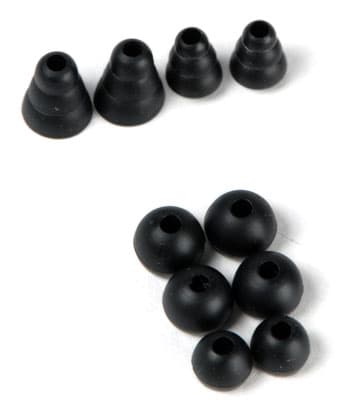
Cable Connectivity
{{section_header}}{{section.name}}{{/section_header}}
The {{product.name}}s can only hook into standard 1/8th inch (3.5mm) jacks, but considering there really aren't portable media players with a 1/4th inch jack, this shouldn't be an issue.
Portability
{{section_header}}{{section.name}}{{/section_header}}
With the included cable management system and leather carrying case, the {{product.name}}s can go just about anywhere with you, and will not be a huge burden in your pocket, purse, or bag.
Maintenance
{{section_header}}{{section.name}}{{/section_header}}
Aside from being able to remove the foam in the nozzle to clean, there really isn't a whole heck of a lot you can do to maintain your cans.
Design
{{section_header}}{{section.name}}{{/section_header}}
Both use balanced armature drivers, but the XBA-1s are a little lighter, and use only one driver per earbud. The {{product.name}}s, on the other hand, use three, but are a little less comfortable. Neither can be used as a headset.
Frequency Response
{{section_header}}{{section.name}}{{/section_header}}
The {{product.name}}s win this one hands-down, as they preserve much more of the high end than do the XBA-1s.
Distortion
{{section_header}}{{section.name}}{{/section_header}}
Both have distortion issues.
Tracking
{{section_header}}{{section.name}}{{/section_header}}
Neither really have many errors in the way of tracking that are audible to the human ear.
Isolation
{{section_header}}{{section.name}}{{/section_header}}
Both headphones attenuate a crazy amount of sound, but the {{product.name}}s block out a bit more overall.
Comfort
{{section_header}}{{section.name}}{{/section_header}}
Neither set of headphones are very comfortable, but we urge you to try them on before you buy to ensure that you will get the fit that's right for you. After all, we all have different heads!
Verdict
{{section_header}}{{section.name}}{{/section_header}}
While the XBA-1s can hang with some of the best, you definitely get a lot more headphone for the increase in price for the {{product.name}}s. Still, if you're looking to save yourself some coin, you can definitely save money by picking up the XBA-1s.
Design
{{section_header}}{{section.name}}{{/section_header}}
While both of these headphones are in-ears, the designs are very different. For example, the {{product.name}}s have 6 total drivers, don't offer much in the way of durability, and can not be used as a headset. The Vibrato Remotes, on the other hand, have 2 total drivers, can be used as a smartphone headset, and are ridiculously durable with a kevlar weave over the cables, and metal housing.
Frequency Response
{{section_header}}{{section.name}}{{/section_header}}
The {{product.name}}s offer a better frequency response for casual listeners, but for the bass fan, the Vibratos are the better pick.
Distortion
{{section_header}}{{section.name}}{{/section_header}}
The V-moda in-ears trounce the {{product.name}}s in this category.
Tracking
{{section_header}}{{section.name}}{{/section_header}}
You can't go wrong with either headphone in terms of tracking performance.
Isolation
{{section_header}}{{section.name}}{{/section_header}}
Both headphones attenuate a crazy amount of sound, and you really can't go wrong here.
Comfort
{{section_header}}{{section.name}}{{/section_header}}
Despite the fact that in-ear headphones are typically not that comfortable, V-moda has put a lot of blood, sweat, and tears into making their sleeves fit as comfortably as possible, and it shows. While there isn't a dramatic difference in comfort, the Vibrato Remotes put a bit less pressure on your ear canals than do the {{product.name}}s, even though they are slightly heavier.
Verdict
{{section_header}}{{section.name}}{{/section_header}}
Given that the {{product.name}}s cost over $100 more than the Vibrato Remotes, offer less durability, and functionality than do the V-moda in-ears, chances are good you'd be better off with picking up the latter headphones. If, however, you are not a bass head, and you want a flatter frequency response, definitely pick up the {{product.name}}s instead, as the Vibrato Remotes have an insane level of bass emphasis.
Design
{{section_header}}{{section.name}}{{/section_header}}
For the extra money you'd pay for the Sennheiser IE 8is, you get the ability to recable your in-ears, ear loops, a remote, and shirt clip. The {{product.name}}s have none of these things.
Frequency Response
{{section_header}}{{section.name}}{{/section_header}}
While the {{product.name}}s have the better overall frequency response for audiophiles, the IE 8is have a more exaggerated bass emphasis for bass lovers.
Distortion
{{section_header}}{{section.name}}{{/section_header}}
The Sennheiser cans have little to no distortion, while the {{product.name}}s have a measurable amount.
Tracking
{{section_header}}{{section.name}}{{/section_header}}
Hands-down the {{product.name}}s have the better performance here, as they do not have the same wild swing in channel preference near 7kHz.
Isolation
{{section_header}}{{section.name}}{{/section_header}}
The {{product.name}}s take this one hands-down, as they block out far more abient noise than do the IE 8is.
Comfort
{{section_header}}{{section.name}}{{/section_header}}
While the {{product.name}}s aren't inherently uncomfortable, the Sennheiser IE 8is do a lot more to enhance the comfort of their headphones by adding ear loops to better distribute the weight. While comfort is largely subjective, you stand a better chance of finding a configuration of options that will fit you better with the IE 8is.
Verdict
{{section_header}}{{section.name}}{{/section_header}}
While the Sennheiser cans provide stiff competition on many fronts, you certainly pay for them. While many of the features are nice to have, if you're looking for a set of headphones and nothing more, we'd stick to the {{product.name}}s, as they are no-frills headphones with a decent frequency response and portability options. If you want the other features, however, the Sennheiser IE 8is are very solid cans.
Conclusion
{{section_header}}{{section.name}}{{/section_header}}
This year, Sony introduced the XBA line of in-ear headphones, with their balanced armature driver technology. Among the higher end models is the XBA-3 ($279 MSRP), the triple-driver in-ear offering from Sony to satisfy audiophiles on the go. While these headphones lack quite a bit in features, it makes up for it in frequency response.
No headphones are perfect when it comes to audio quality, and for the {{product.name}}s, that comes in a high level of total harmonic distortion, even if the general level of distortion is somewhat low. On top of this, smartphone users will probably balk at the {{product.name}}'s inability to be used as a headset.
All said and done though, these are a pair of headphones with a somewhat radical internal design, and the fact that they turned out this well is good news for the future. If you're looking for a pair of standalone headphones, there are worse at the price point, and the {{product.name}}s definitely have something to offer if you lament the loss of high frequencies in lower-priced headphones.
Meet the tester
A seasoned writer and professional photographer, Chris reviews cameras, headphones, smartphones, laptops, and lenses. Educated in Political Science and Linguistics, Chris can often be found building a robot army, snowboarding, or getting ink.
Checking our work.
Our team is here for one purpose: to help you buy the best stuff and love what you own. Our writers, editors, and lab technicians obsess over the products we cover to make sure you're confident and satisfied. Have a different opinion about something we recommend? Email us and we'll compare notes.
Shoot us an email


